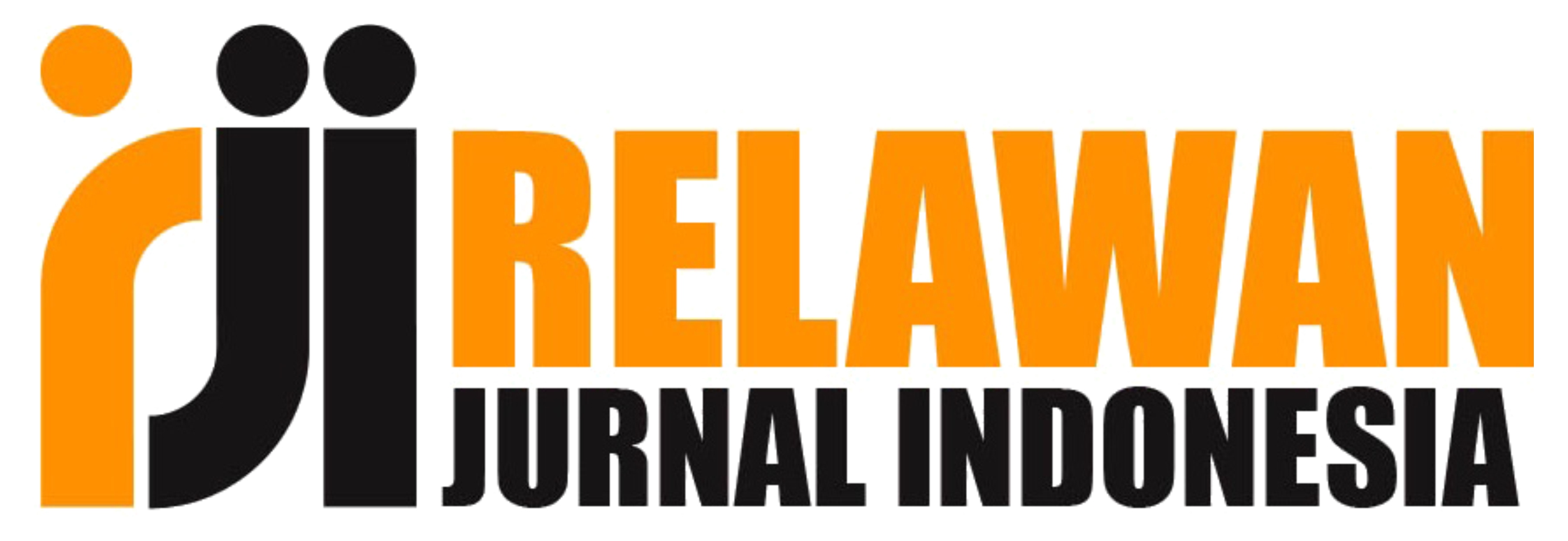The Seren Taun Experience: A Catalyst for Sustainable Cultural Tourism and Visitor Loyalty in West Java
Abstract
Keywords
Full Text:
PDFReferences
Abbasi, G. A., Kumaravelu, J., Goh, Y.-N., & Dara Singh, K. S. (2021). Understanding the intention to revisit a destination by expanding the theory of planned behaviour (TPB). Spanish Journal of Marketing - ESIC, 25(2), 282–311. https://doi.org/10.1108/SJME-12-2019-0109
Adisaputri, Y. D., & Widiastuti, I. (2015). Territorial Identification of Vernacular Settlement Cigugur through the Practice of Seren Taun Ritual in Kuningan, West Java. Procedia - Social and Behavioral Sciences, 184, 196–205. https://doi.org/10.1016/j.sbspro.2015.05.080
Afshardoost, M., & Eshaghi, M. S. (2020). Destination image and tourist behavioural intentions: A meta-analysis. Tourism Management, 81, 1–10. https://doi.org/10.1016/j.tourman.2020.104154
Albayrak, T., & Caber, M. (2016). Destination attribute effects on rock climbing tourist satisfaction: an Asymmetric Impact-Performance Analysis. Tourism Geographies, 18(3), 280–296. https://doi.org/10.1080/14616688.2016.1172663
Ali, F., Rasoolimanesh, S. M., Sarstedt, M., Ringle, C. M., & Ryu, K. (2018). An assessment of the use of partial least squares structural equation modeling (PLS-SEM) in hospitality research. International Journal of Contemporary Hospitality Management, 30(1), 514–538. https://doi.org/10.1108/IJCHM-10-2016-0568
Ansori, C., Raharjo, P. D., & Fariji, M. A. (2021). Mapping of Karangsambung - Karangbolong Geopark, as an Effort to Manage Geoheritage in Kebumen Regency. IOP Conference Series: Earth and Environmental Science, 887(1), 1–8. https://doi.org/10.1088/1755-1315/887/1/012029
Antón, C., Camarero, C., & Laguna-García, M. (2017). Towards a new approach of destination loyalty drivers: satisfaction, visit intensity and tourist motivations. Current Issues in Tourism, 20(3), 238–260. https://doi.org/10.1080/13683500.2014.936834
Arrasyid, R., Urfan, F., Darsiharjo, Ruhimat, M., Setiawan, I., & Logayah, D. S. (2021). Edutourism development model in unesco global geopark ciletuh palabuhanratu sukabumi district. IOP Conference Series: Earth and Environmental Science, 683(1), 1–10. https://doi.org/10.1088/1755-1315/683/1/012120
Ban, O., Hatos, A., Droj, L., & Toderascu, C. (2021). The Role of Destination Experience in the Sustainability of the Image of the Tourist Destination. Sustainability, 13, 1–13. https://doi.org/10.20944/preprints202106.0730.v1
Calantone, R. J., Di Benedetto, C. A., Hakam, A., & Bojanic, D. C. (1989). Multiple multinational tourism positioning using correspondence analysis. Journal of Travel Research, 28(2), 25–32. https://doi.org/10.1177/004728758902800207
Chandralal, L., & Valenzuela, F.-R. (2013). Exploring Memorable Tourism Experiences: Antecedents and Behavioural Outcomes. Journal of Economics, Business and Management, 1(2), 177–181. https://doi.org/10.7763/joebm.2013.v1.38
Chaulagain, S., Wiitala, J., & Fu, X. (2019). The impact of country image and destination image on US tourists’ travel intention. Journal of Destination Marketing and Management, 12, 1–11. https://doi.org/10.1016/j.jdmm.2019.01.005
Chen, H., & Rahman, I. (2018). Cultural tourism: An analysis of engagement, cultural contact, memorable tourism experience and destination loyalty. Tourism Management Perspectives, 26, 153–163. https://doi.org/10.1016/j.tmp.2017.10.006
Chi, C. G. Q., & Qu, H. (2008). Examining the structural relationships of destination image, tourist satisfaction and destination loyalty: An integrated approach. Tourism Management, 29(4), 624–636. https://doi.org/10.1016/j.tourman.2007.06.007
Chu, Q., Bao, G., & Sun, J. (2022). Progress and Prospects of Destination Image Research in the Last Decade. Sustainability, 14(17), 1–21. https://doi.org/10.3390/su141710716
Coelho, M. de F., & Gosling, M. de S. (2018). Memorable Tourism Experience (MTE): a scale proposal and test. Tourism & Management Studies, 14(4), 15–24. https://doi.org/10.18089/tms.2018.14402
Cornelisse, M. (2018). Understanding memorable tourism experiences: A case study. Research in Hospitality Management, 8(2), 93–99. https://doi.org/10.1080/22243534.2018.1553370
Coudounaris, D. N., & Sthapit, E. (2017). Antecedents of memorable tourism experience related to behavioral intentions. Psychology and Marketing, 34(12), 1084–1093. https://doi.org/10.1002/mar.21048
Darmawan, C., Fadjarajani, S., & Hilman, I. (2021). Identification of Kampung Naga Cultural Potential in Supporting The Realization of Geopark Galunggung. GeoEco, 8(1), 35–47. https://doi.org/10.20961/ge.v8i1.51686
Dong, Y., & Qu, Y. (2022). The mechanism of body–mind integration in the formation of destination attachment: A comparison of first-time and repeat tourists. Frontiers in Psychology, 13, 1–16. https://doi.org/10.3389/fpsyg.2022.1010589
Elfiondri, Zaitul, & Rina, N. (2021). Tradition, cultural contact and English for tourism: the case of Mentawai, Indonesia. Heliyon, 7(6), 1–8. https://doi.org/10.1016/j.heliyon.2021.e07322
Gnoth, J., & Zins, A. H. (2013). Developing a tourism cultural contact scale. Journal of Business Research, 66(6), 738–744. https://doi.org/10.1016/j.jbusres.2011.09.012
Gordon, J. E. (2018). Geoheritage, Geotourism and the Cultural Landscape: Enhancing the Visitor Experience and Promoting Geoconservation. Geosciences, 8(4), 136–161. https://doi.org/10.3390/geosciences8040136
Hair, J. F., Hult, G. T. M., Ringle, C., & Sarstedt, M. (2014). A Primer on Partial Least Squares Structural Equation Modeling (PLS-SEM). SAGE Publications.
Haryeni, H., Yasri, Y., & Evanita, S. (2022). The Role of Destination Image in Building Loyalty of Halal Tourism Destinations: Satisfaction as Mediating Variable. AMAR (Andalas Management Review), 6(2), 1–17. https://doi.org/10.25077/amar.6.2.1-17.2022
Haywood, K. M. (1990). Revising and implementing the marketing concept as it applies to tourism. Tourism Management, 11(3), 195–205. https://doi.org/10.1016/0261-5177(90)90042-8
Herrera-Franco, G., Montalván-Burbano, N., Carrión-Mero, P., Jaya-Montalvo, M., & Gurumendi-Noriega, M. (2021). Worldwide Research on Geoparks through Bibliometric Analysis. Sustainability, 13(3), 1175–1207. https://doi.org/10.3390/su13031175
Hidayah, R. T., Rahayu, A., Wibowo, L. A., & Hendrayati, H. (2022). A Model for Creating Memorable Tourism Experiences To Increase The Intensity Of Tourist Loyalty To Geopark Tourist Destinations In The Province Of West Java. Central Asia & the Caucasus, 23(1), 1032–1040. https://doi.org/10.37178/ca-c.23.1.098
Hosseini, S., Cortes Macias, R., & Almeida Garcia, F. (2023). Memorable tourism experience research: a systematic review of the literature. Tourism Recreation Research, 48(3), 465–479. https://doi.org/10.1080/02508281.2021.1922206
Huang, S., & Choi, H. S. C. (2019). Developing and validating a multidimensional tourist engagement scale (TES). Service Industries Journal, 39(7–8), 469–497. https://doi.org/10.1080/02642069.2019.1576641
Jebbouri, A., Zhang, H., Imran, Z., Iqbal, J., & Bouchiba, N. (2022). Impact of Destination Image Formation on Tourist Trust: Mediating Role of Tourist Satisfaction. Frontiers in Psychology, 13, 1–17. https://doi.org/10.3389/fpsyg.2022.845538
Jia, Z., Wu, F., & Hou, D. (2023). Geodiversity, Geotourism, Geoconservation, and Sustainable Development in Longyan Aspiring Geopark (China). Geoheritage, 15(1), 11–24. https://doi.org/10.1007/s12371-022-00784-8
Kartika, T., Hurriyati, R., & Hendrayati, H. (2022). Creating Tourism Experience- Orchestra Model Approach. Advances in Economics, Business and Management Research, 225–230. https://doi.org/10.2991/aebmr.k.220701.044
Kim, J. H. (2018). The Impact of Memorable Tourism Experiences on Loyalty Behaviors: The Mediating Effects of Destination Image and Satisfaction. Journal of Travel Research, 57(7), 856–870. https://doi.org/10.1177/0047287517721369
Kim, K. H., & Park, D. B. (2017). Relationships Among Perceived Value, Satisfaction, and Loyalty: Community-Based Ecotourism in Korea. Journal of Travel and Tourism Marketing, 34(2), 171–191. https://doi.org/10.1080/10548408.2016.1156609
Kumar, P., Mishra, J. M., & Rao, Y. V. (2022). Analysing tourism destination promotion through Facebook by Destination Marketing Organizations of India. Current Issues in Tourism, 25(9), 1416–1431. https://doi.org/10.1080/13683500.2021.1921713
Kurnia, L. (2015). “Seren Taun” between hegemony and culture industry Reading a Sundanese Ritual of Harvest in Cigugur, West Java. Wacana, 15(2), 300–314. https://doi.org/10.17510/wacana.v15i2.405
Lan, T., Zheng, Z., Tian, D., Zhang, R., Law, R., & Zhang, M. (2021). Resident-Tourist Value Co-Creation in the Intangible Cultural Heritage Tourism Context: The Role of Residents’ Perception of Tourism Development and Emotional Solidarity. Sustainability, 13(3), 1369–1389. https://doi.org/10.3390/su13031369
Lao, Y., Zhu, J., & Liu, J. (2023). Tourism destinations and tourist behavior based on community interaction models of film-enabled tourism destinations. Frontiers in Psychology, 13, 1–17. https://doi.org/10.3389/fpsyg.2022.1108812
Li, J., & Cao, B. (2022). Study on Tourism Consumer Behavior and Countermeasures Based on Big Data. Computational Intelligence and Neuroscience, 2022, 1–12. https://doi.org/10.1155/2022/6120511
Li, X., Abbas, J., Dongling, W., Baig, N. U. A., & Zhang, R. (2022). From Cultural Tourism to Social Entrepreneurship: Role of Social Value Creation for Environmental Sustainability. Frontiers in Psychology, 13, 1–16. https://doi.org/10.3389/fpsyg.2022.925768
Liberato, P., Alen, E., & Liberato, D. (2018). Smart tourism destination triggers consumer experience: the case of Porto. European Journal of Management and Business Economics, 27(1), 6–25. https://doi.org/10.1108/EJMBE-11-2017-0051
Lin, C. H., & Kuo, B. Z. L. (2016). The Behavioral Consequences of Tourist Experience. Tourism Management Perspectives, 18, 84–91. https://doi.org/10.1016/j.tmp.2015.12.017
Lin, J., Kang, Y., Hong, L., & Huang, Y. (2022). Can cultural tourism experience enhance cultural confidence? The evidence from Qingyuan Mountain. Frontiers in Psychology, 13, 1–11. https://doi.org/10.3389/fpsyg.2022.1063569
Lu, Y., Lai, I. K. W., Liu, X. Y., & Wang, X. (2022). Influence of memorability on revisit intention in welcome back tourism: The mediating role of nostalgia and destination attachment. Frontiers in Psychology, 13, 1–11. https://doi.org/10.3389/fpsyg.2022.1020467
Maghrifani, D., Liu, F., & Sneddon, J. (2022). Understanding Potential and Repeat Visitors’ Travel Intentions: The Roles of Travel Motivations, Destination Image, and Visitor Image Congruity. Journal of Travel Research, 61(5), 1121–1137. https://doi.org/10.1177/00472875211018508
McKercher, B. (2020). Cultural tourism market: a perspective paper. Tourism Review, 75(1), 126–129. https://doi.org/10.1108/TR-03-2019-0096
Michael, N., James, R., & Michael, I. (2018). Australia’s cognitive, affective and conative destination image: an Emirati tourist perspective. Journal of Islamic Marketing, 9(1), 36–59. https://doi.org/10.1108/JIMA-06-2016-0056
Moon, H., & Han, H. (2018). Destination attributes influencing Chinese travelers’ perceptions of experience quality and intentions for island tourism: A case of Jeju Island. Tourism Management Perspectives, 28, 71–82. https://doi.org/10.1016/j.tmp.2018.08.002
Moon, H., & Han, H. (2019). Tourist experience quality and loyalty to an island destination: the moderating impact of destination image. Journal of Travel and Tourism Marketing, 36(1), 43–59. https://doi.org/10.1080/10548408.2018.1494083
Morrison, A. M. (2013). Marketing and Managing Tourism Destinations (1st ed.). Routledge. https://doi.org/10.4324/9780203081976
Muslim, D., Zakaria, Z., Rachmat, H., Iqbal, P., Muslim, G. O., Sadewo, M. S., & Muslim, F. N. (2022). Identification of Geodiversity and Geosite Assessment around Geohazard Area of Suoh Aspiring Geopark in West Lampung, Sumatra, Indonesia. Resources, 11(11), 104–118. https://doi.org/10.3390/resources11110104
Nghiêm-Phú, B., & Bagul, A. (2020). An extended model of destination image formation: The inclusion of sensory images. European Journal of Tourism Research, 24, 2411–2421. https://doi.org/10.54055/ejtr.v24i.413
Nguyen Viet, B., Dang, H. P., & Nguyen, H. H. (2020). Revisit intention and satisfaction: The role of destination image, perceived risk, and cultural contact. Cogent Business and Management, 7(1), 1–20. https://doi.org/10.1080/23311975.2020.1796249
Oppermann, M. (2000). Tourism Destination Loyalty. Journal of Travel Research, 39(1), 78–84. https://doi.org/10.1177/004728750003900110
Papadimitriou, D., Kaplanidou, K. (Kiki), & Apostolopoulou, A. (2018). Destination Image Components and Word-of-Mouth Intentions in Urban Tourism: A Multigroup Approach. Journal of Hospitality and Tourism Research, 42(4), 503–527. https://doi.org/10.1177/1096348015584443
Pourfakhimi, S., Duncan, T., & Coetzee, W. J. L. (2020). Electronic word of mouth in tourism and hospitality consumer behaviour: state of the art. Tourism Review, 75(4), 637–661. https://doi.org/10.1108/TR-01-2019-0019
Prabowo, Y. D., & Nurbaeti, S. M. (2023). Analysis of Utilization of Local Wisdom as a Base for Tourism Village Development in Wewengkon Kasepuhan Customary Citorek, Lebak, Banten. Journal of Tourism, Hospitality and Sports, 28–36. https://doi.org/10.7176/jths/64-05
Rachman, Y. B. (2017). Cultural Values in Seren Taun Ceremony in The Community of Pasir Eurih Village, Tamansari, Bogor, West Java. International Review of Humanities Studies, 2(2), 103–112. www.irhs.ui.ac.id,
Rasoolimanesh, S. M., Khoo-Lattimore, C., Md Noor, S., Jaafar, M., & Konar, R. (2021). Tourist engagement and loyalty: gender matters? Current Issues in Tourism, 24(6), 871–885. https://doi.org/10.1080/13683500.2020.1765321
Rasoolimanesh, S. M., Md Noor, S., Schuberth, F., & Jaafar, M. (2019). Investigating the effects of tourist engagement on satisfaction and loyalty. Service Industries Journal, 39(7–8), 559–574. https://doi.org/10.1080/02642069.2019.1570152
Rasoolimanesh, S. M., Seyfi, S., Hall, C. M., & Hatamifar, P. (2021). Understanding memorable tourism experiences and behavioural intentions of heritage tourists. Journal of Destination Marketing and Management, 21, 1–14. https://doi.org/10.1016/j.jdmm.2021.100621
Riege, A. M., & Perry, C. (2000). National marketing strategies in international travel and tourism. European Journal of Marketing, 34(11/12), 1290–1305. https://doi.org/10.1108/03090560010348452
Rifqi, M. F., & Pramukanto, Q. (2021). Landscape planning for geodiversity conservation of Ciletuh geo area in Ciletuh Geopark using bioregional approach. IOP Conference Series: Earth and Environmental Science, 879(1), 1–10. https://doi.org/10.1088/1755-1315/879/1/012039
Rosana, M. F., Bachtiar, T., & Oktariadi, O. (2019). Pesona Geopark di Jawa Barat (O. Abdurahman, Ed.). Dinas Pariwisata dan Kebudayaan Provinsi Jawa Barat.
Sangpikul, A. (2018). The effects of travel experience dimensions on tourist satisfaction and destination loyalty: the case of an island destination. International Journal of Culture, Tourism, and Hospitality Research, 12(1), 106–123. https://doi.org/10.1108/IJCTHR-06-2017-0067
Santoso, M. B., Apsari, N. C., & Raharjo, S. T. (2020). Ciletuh Geopark: Toward the Tourism Industry. 3rd Global Conference On Business, Management, and Entrepreneurship, 65–68.
Sarstedt, M., Ringle, C. M., & Hair, J. F. (2021). Partial Least Squares Structural Equation Modeling. Handbook of Market Research, 1–47. https://doi.org/10.1007/978-3-319-05542-8_15-2
Schlesinger, W., Cervera-Taulet, A., & Pérez-Cabañero, C. (2020). Exploring the links between destination attributes, quality of service experience and loyalty in emerging Mediterranean destinations. Tourism Management Perspectives, 35, 1–12. https://doi.org/10.1016/j.tmp.2020.100699
Seyfi, S., Hall, C. M., & Rasoolimanesh, S. M. (2020). Exploring memorable cultural tourism experiences. Journal of Heritage Tourism, 15(3), 341–357. https://doi.org/10.1080/1743873X.2019.1639717
Sharma, P., & Kumar Nayak, J. (2019). Examining event image as a predictor of loyalty intentions in yoga tourism event: A mediation model. Journal of Convention and Event Tourism, 20(3), 202–223. https://doi.org/10.1080/15470148.2019.1633721
Sotiriadis, M. (2020). Tourism Destination Marketing: Academic Knowledge. Encyclopedia, 1(1), 42–56. https://doi.org/10.3390/encyclopedia1010007
Sthapit, E., & Coudounaris, D. N. (2018). Memorable tourism experiences: antecedents and outcomes. Scandinavian Journal of Hospitality and Tourism, 18(1), 72–94. https://doi.org/10.1080/15022250.2017.1287003
Stone, M. J., Migacz, S., & Sthapit, E. (2022). Connections Between Culinary Tourism Experiences and Memory. Journal of Hospitality & Tourism Research, 46(4), 797–807. https://doi.org/10.1177/1096348021994171
Stylos, N., Bellou, V., Andronikidis, A., & Vassiliadis, C. A. (2017). Linking the dots among destination images, place attachment, and revisit intentions: A study among British and Russian tourists. Tourism Management, 60, 15–29. https://doi.org/10.1016/j.tourman.2016.11.006
Stylos, N., Vassiliadis, C. A., Bellou, V., & Andronikidis, A. (2016). Destination images, holistic images and personal normative beliefs: Predictors of intention to revisit a destination. Tourism Management, 53, 40–60. https://doi.org/10.1016/j.tourman.2015.09.006
Su, D. N., Nguyen, N. A. N., Nguyen, Q. N. T., & Tran, T. P. (2020). The link between travel motivation and satisfaction towards a heritage destination: The role of visitor engagement, visitor experience and heritage destination image. Tourism Management Perspectives, 34, 1–11. https://doi.org/10.1016/j.tmp.2020.100634
Suhartanto, D., Brien, A., Primiana, I., Wibisono, N., & Triyuni, N. N. (2020). Tourist loyalty in creative tourism: the role of experience quality, value, satisfaction, and motivation. Current Issues in Tourism, 23(7), 867–879. https://doi.org/10.1080/13683500.2019.1568400
Sukaris, S., Suyono, J., & Ratnasahara Elisabeth, D. (2020). Influence of Tourist Experience On Tourist Destinations Against Loyalty Through The Value of Traveling. Journal of Physics: Conference Series, 1573(1), 1–8. https://doi.org/10.1088/1742-6596/1573/1/012009
Taheri, B., Jafari, A., & O’Gorman, K. (2014). Keeping your audience: Presenting a visitor engagement scale. Tourism Management, 42, 321–329. https://doi.org/10.1016/j.tourman.2013.12.011
Talaee Malmiri, A. R., Norouzi Isfahani, R., BahooToroody, A., & Abaei, M. M. (2021). A systematic approach for predicting loyalty behavior of tourist destinations. Journal of Tourism Futures, 7, 1–15. https://doi.org/10.1108/JTF-11-2020-0194
Tang, M., & Xu, H. (2023). Cultural Integration and Rural Tourism Development: A Scoping Literature Review. Tourism and Hospitality, 4(1), 75–90. https://doi.org/10.3390/tourhosp4010006
Vada, S., Prentice, C., & Hsiao, A. (2019). The influence of tourism experience and well-being on place attachment. Journal of Retailing and Consumer Services, 47, 322–330. https://doi.org/10.1016/j.jretconser.2018.12.007
Wang, D., Hu, S., Feng, L., & Lu, Y. (2022). Tourism Destination Image Perception Model Based on Clustering and PCA from the Perspective of New Media and Wireless Communication Network: A Case Study of Leshan. Wireless Communications and Mobile Computing, 2022, 1–9. https://doi.org/10.1155/2022/8630927
Wang, Z., Udomwong, P., Fu, J., & Onpium, P. (2023). Destination image: A review from 2012 to 2023. Cogent Social Sciences, 9(1), 1–22. https://doi.org/10.1080/23311886.2023.2240569
Wei, C., Zhao, W., Zhang, C., & Huang, K. (2019). Psychological factors affecting memorable tourism experiences. Asia Pacific Journal of Tourism Research, 24(7), 619–632. https://doi.org/10.1080/10941665.2019.1611611
Wulandari, W., Yadnya, I. D. G. S. A., Suryana, M., & Susanto, E. (2023). The Experience of Visiting an Amusement Park in a Developing Country: The Role of Technology Adoption and Service Quality. African Journal of Hospitality, Tourism and Leisure, 12(1), 46–57. https://doi.org/DOI:10.46222/ajhtl.19770720.353
Xu, L., Zhang, J., & Nie, Z. (2022). Role of Cultural Tendency and Involvement in Heritage Tourism Experience: Developing a Cultural Tourism Tendency–Involvement–Experience (TIE) Model. Land, 11(3), 370–386. https://doi.org/10.3390/land11030370
XU Ning-ning, JI Xiao-zhen, & GUO Ying-zhi. (2022). A Study on the Relationship Between Cultural Identity, Place Attachment, and Tourist Loyalty. J. of Tourism and Hospitality Management, 10(1), 38–50. https://doi.org/10.17265/2328-2169/2022.01.006
Yang, S., Isa, S. M., Yao, Y., Xia, J., & Liu, D. (2022). Cognitive image, affective image, cultural dimensions, and conative image: A new conceptual framework. Frontiers in Psychology, 13, 1–11. https://doi.org/10.3389/fpsyg.2022.935814
Yerizal, Y., & Abror, A. (2019). The Influence of E-Wom and Image Destination on Revisit Decision Moderated by Trust: A Literature Review. Proceedings of the 2nd Padang International Conference on Education, Economics, Business and Accounting (PICEEBA-2 2018), 725–732. https://doi.org/10.2991/piceeba2-18.2019.58
Zakiah, S., Barata, E., & Hermana, D. (2023). Analysis of Tourist Loyalty and Satisfaction Based on Destination Image of Sustainable Tourism in West Java. Jurnal Ilmu Manajemen Advantage, 7(1), 97–108. https://doi.org/10.30741/adv.v7i1.988
Zeng, B. (2017). Cultural centre, destination cultural offer and visitor satisfaction. Sustainability (Switzerland), 9(11), 1984–1996. https://doi.org/10.3390/su9111984
Zhang, H. (2022). [Retracted] Analysis of the Overall Development Mode of Cultural Tourism under the Creative Economy Environment. Journal of Environmental and Public Health, 2022(1), 1–10. https://doi.org/10.1155/2022/3498622
Zhang, H., Wu, Y., & Buhalis, D. (2018). A model of perceived image, memorable tourism experiences and revisit intention. Journal of Destination Marketing and Management, 8, 326–336. https://doi.org/10.1016/j.jdmm.2017.06.004
Zhang, L., Yan, T., Jian, L., & Wang, Y. (2022). Research on the Competitiveness Evaluation of Cultural Tourism Industry in Jilin Province. Advances in Economics, Business and Management Research, 1778–1783. https://doi.org/10.2991/aebmr.k.220307.292
Zhou, M., & Yu, H. (2022). Exploring How Tourist Engagement Affects Destination Loyalty: The Intermediary Role of Value and Satisfaction. Sustainability, 14(3), 1621–1638. https://doi.org/10.3390/su14031621
DOI: http://dx.doi.org/10.56444/mem.v40i1.5606
Article Metrics
Abstract view : 0 timesPDF - 0 times
Refbacks
- There are currently no refbacks.
Copyright (c) 2025 Media Ekonomi dan Manajemen

This work is licensed under a Creative Commons Attribution 4.0 International License.

This work is licensed under a Creative Commons Attribution 4.0 International License.







